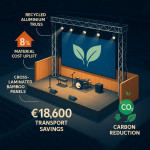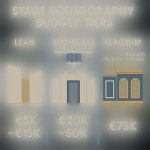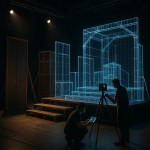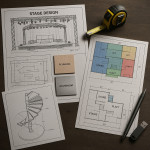Briefing a stage scenographer: production notes that speed up creative alignment
Clear production notes are the shortest route to a stage set that looks, feels and moves exactly as you imagined. Follow this guide to brief a stage scenographer in a way that slashes revisions, protects budgets and keeps every crew member—in the studio and on tour—creatively aligned from day one.
Why production notes matter more than moodboards
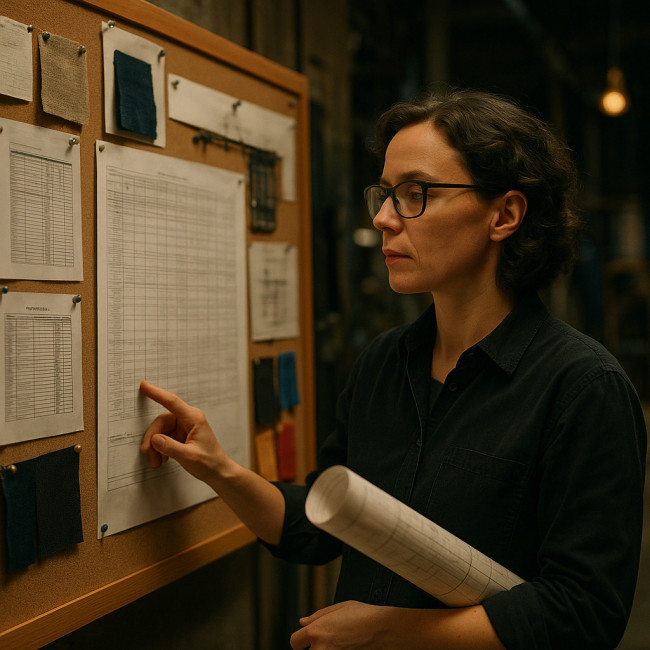
While moodboards convey atmosphere, production notes translate that atmosphere into specific, measurable tasks. A tight note pack defines load-in dimensions, structural limits, cue timing and sustainability targets—elements a moodboard alone can't capture. Producers who invest time here typically compress pre-build decision cycles by 25 %, according to the European Theatre Convention's last three season reports.
Source : European Theatre Convention
The five-part note pack that fast-tracks alignment
1. Technical specification sheet
List venue dimensions, rigging capacities, power distribution, floor loading limits and truck dock constraints. Include links to workshop-ready drawing packs if they already exist.
2. Scenic budget tiers
Create A, B and C options so your scenographer can prioritise spend. For deeper insights on cost bands, review this budget decoding guide.
3. Material requirement list
Specify mandatory certifications (e.g., Euroclass B fire rating) and sustainability goals. Producers embracing recycled flats or modular platforms often unlock tax incentives similar to those found in eco-smart stage material roadmaps.
4. Cue & automation sheet
- Scene change timings in bars and beats.
- Automation stroke lengths and speeds.
- Interaction points for lighting, video and performer blocking.
When cues integrate augmented reality layers, reference AR workflow bridges to keep tech teams in sync.
5. Risk & compliance log
Map hazards, from overhead loads to pyrotechnics. Cite national codes plus the latest 2025 safety regulations. Add a mitigation owner and review date for each risk.
Sample production-note matrix
| Note type | Main owner | Decision deadline | Impact if late |
|---|---|---|---|
| Rigging plot | Head rigger | 6 weeks pre-build | Truck re-loading + €4 k cost |
| Props list | Props master | 4 weeks pre-tech | Overnight courier fees |
| Lighting focus map | Lighting designer | 2 weeks pre-tech | Extra rehearsal day |
| Automation safety sign-off | Stage manager | 1 week pre-preview | Insurance premium ↑10 % |
Workflow: from brief to opening night
- Kick-off call. Present the five-part pack. Invite all department heads, including your scenographer, to challenge any unknowns.
- Pre-visualisation sprint. Within 10 days, the scenographer returns a 3D layout. Teams that need digital-twin accuracy can adopt the scan-to-build loop described in this digital-twin guide.
- Budget lock. Finance approves one of the tiered options. Amend only under change-order rules.
- Prototype & stress test. Build a key scenic element at half scale. Fire-test, load-test and practise cue timing.
- Dress rehearsal sign-off. Cross-check every note item. The scenographer approves sightlines; the producer signs the completion certificate.
Common pitfalls and quick fixes
- Vague language. Replace “large LED wall” with “6 m × 3 m, 3.9 mm pixel pitch, centre DS.”
- Hidden assumptions. If your tour includes outdoor venues, note wind-load limits and IP ratings.
- Late audio overlap. Share the cue sheet with sound early, or expect microphone bleed during scene shifts.
- Forgotten repurposing. Flag future video capture days so scenic finishes withstand camera close-ups.
Aligning remote collaborators
Many scenographers work from multiple cities. Hosting all assets on a secure cloud folder linked to their Artfolio spatial-design profile removes version confusion. Use file-naming conventions like 2025-05-12_LEDWall_v02_SceneA.pdf to keep revisions in order.
Mini-quiz: test your briefing reflexes
FAQ
- How long should the entire note pack be?
- Ten to fifteen pages is ideal. Long enough to remove ambiguity, short enough to skim on a phone backstage.
- Who signs off the production notes?
- The producer holds final approval, but each department head signs their section for accountability.
- Can I revise notes after rehearsal starts?
- Yes, but lock changes into a version-controlled log and communicate across all crews immediately to avoid safety risks.
- Is a digital-twin always necessary?
- No. For static sets a detailed CAD model suffices. Digital twins add value when automation or touring venues vary widely.
Key takeaways
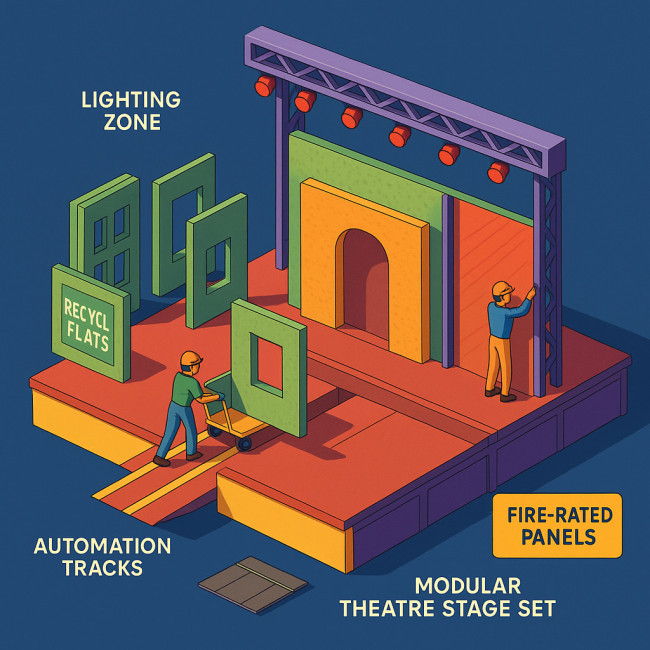
Briefing a stage scenographer is a craft in itself. Deliver tech specs, budget tiers, material lists, cue sheets and risk logs up front, and you'll reclaim weeks of production time. Use clear file names, set decision deadlines and involve every stakeholder early. Your audience will never notice the admin—but they will feel the seamless story the moment lights fade up.
Ready to streamline your next show? Download our free note-pack template and start briefing with confidence today.
